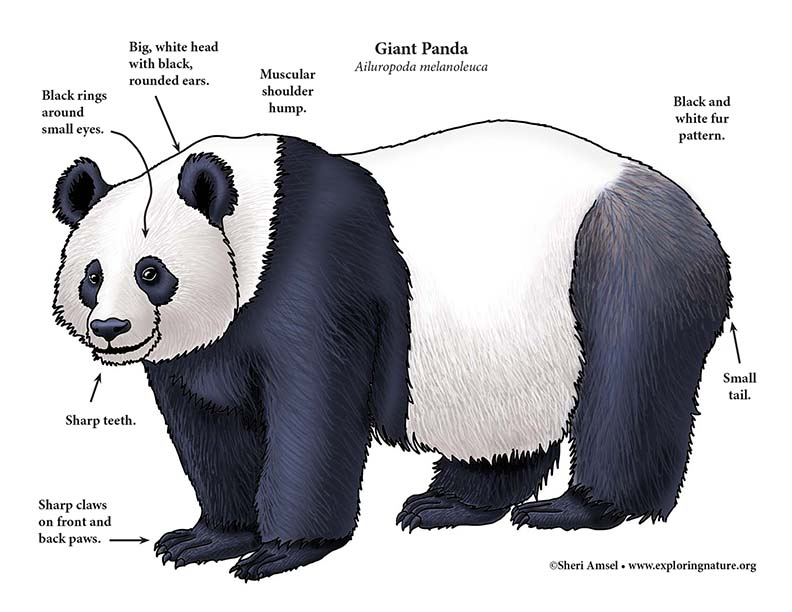

Giant pandas are found only in southwestern China, along the eastern edge of the Tibetan plateau. Although they were once more widespread, today they are limited to six small areas.
They live in forests high up in the mountains between 4,000 and 12,000 feet near dense stands of bamboo.
They can reach more than 6-feet long and up to about 275 pounds. Females are somewhat smaller than the males.
They are active in the evening and at night (nocturnal). They live mostly on the ground but can climb trees. Pandas live alone only coming together to mate. They are territorial and have vocal calls.
They eat the branches, stems and leaves of bamboo. They eat 30 to 80 pounds of bamboo parts a day. They can eat much more of the tender bamboo shoots than they can eat of the leaves.
Their only predator is man.
Females are pregnant for 4-5 months (gestation) and have 1-3 cubs to a litter. Cubs are born in August to September and weigh less than 6 ounces.
The panda’s lifespan in the wild is unknown but in captivity they can live more than 20 years. They are listed as vulnerable.
Kingdom: Animalia
Phylum: Chordata
Subphylum: Vertebrata
Class: Mammalia
Order: Carnivora
Suborder: Caniformia
Family: Ursidae
Genus: Ailuropoda
Species: Ailuropoda melanoleuca
When you research information you must cite the reference. Citing for websites is different from citing from books, magazines and periodicals. The style of citing shown here is from the MLA Style Citations (Modern Language Association).
When citing a WEBSITE the general format is as follows.
Author Last Name, First Name(s). "Title: Subtitle of Part of Web Page, if appropriate." Title: Subtitle: Section of Page if appropriate. Sponsoring/Publishing Agency, If Given. Additional significant descriptive information. Date of Electronic Publication or other Date, such as Last Updated. Day Month Year of access < URL >.
Amsel, Sheri. "Panda (Giant)" Exploring Nature Educational Resource ©2005-2024. December 13, 2024
< http://www.exploringnature.org/db/view/Panda-Giant >

